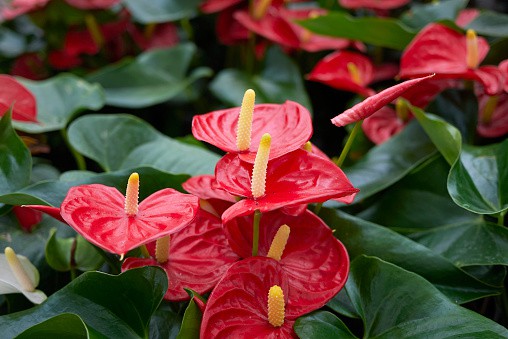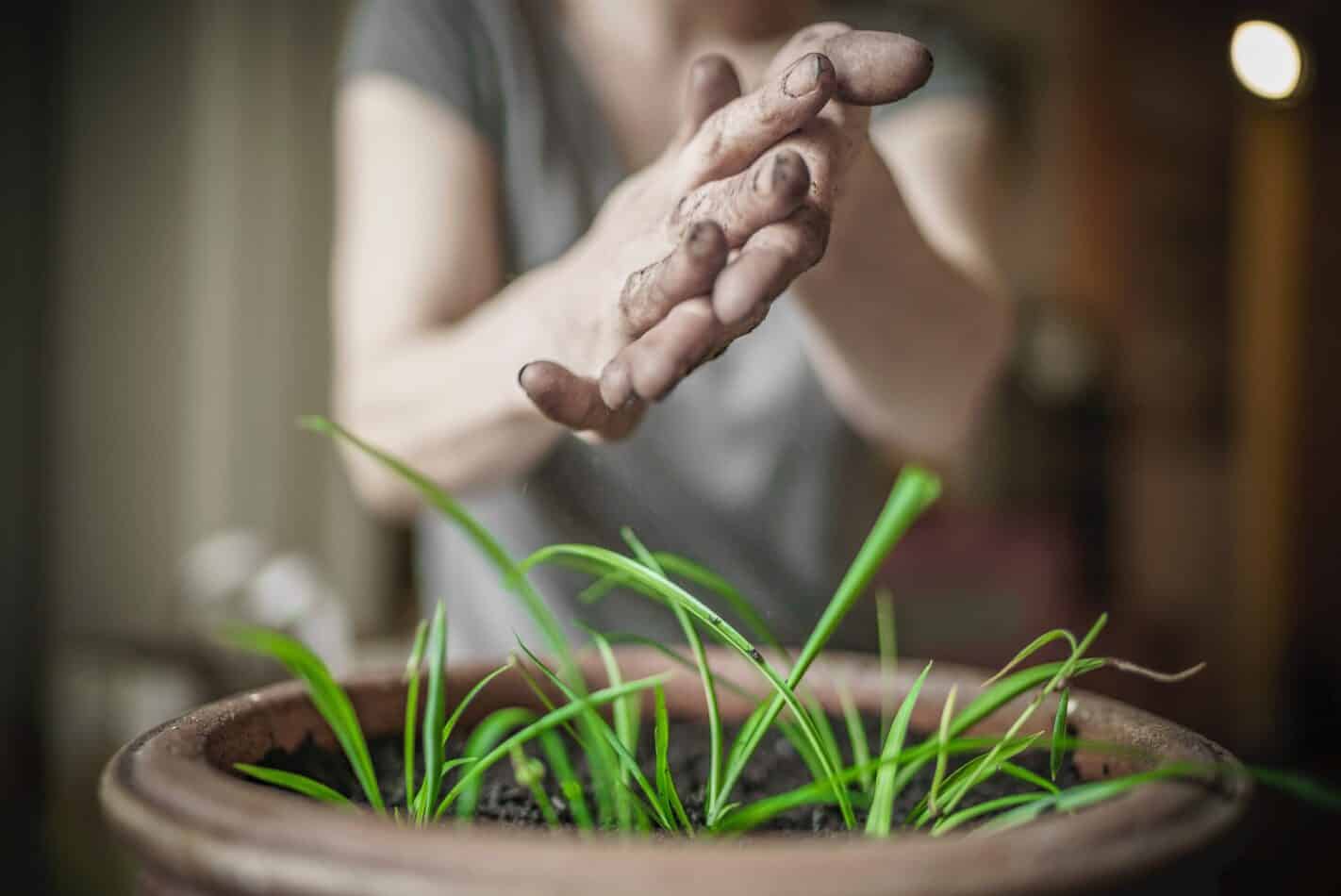The Flaming Flower, otherwise known as Anthurium Andraeanum, is an exotic perennial evergreen flower native to tropical climates of the rainforest. It’s been awarded the RHS Garden Merit Award for its special qualities, and is prized for its stunning beauty. This stunning plant is sometimes referred to as the tail flower, as its petals can grow up to six inches in length, being waxy and tail-shaped. While normally being a deep red in color, these flowers can come in a wide array of different colors, including white, pink, and yellow. Properly watered and cared for, these flowers can bloom all year round.
How to Plant
These plants need high humidity, especially when in a potted condition, so the plant should be places in a warm place, such as a bathrooms or conservatory. The flowers need constant hydration, so that means a lot of regular maintenance. The flower should be planted in a large pot of 50cm or more, and the pot should always be filled with moist, hummus-rich soil. The plant should be occasionally fertilized with a liquid fertilizer such as 10-10-10 mix and the plant should generally have access to dappled sunlight, although indirect light is best to avoid burning the plant due to its pale colors.
Meaning and Symbolism
The Anthurium Andraeanum flower has always had a special significance in tropical climates and cultures for its great beauty and resilience. In days of old, it was seen as a symbol of abundance and prosperity, with its symbolic representation of beauty, health and compassion. In the present day, it continues to be a very fitting gift for special occasions such as anniversaries, mother’s day and Valentine’s day, owing to its meanings of affluence, passion and love.
History, Mythology, and Religious Significance
As previously mentioned, these flowers have maintained an importance in cultures throughout the centuries and have been sacred in certain parts of Central and South America. In ancient Aztec culture, these flowers were a divine symbol and were usually gifted to women as a symbol of appreciation and respect. These flowers also have a Christian symbolism and is believed to represent the beautiful shell-like petals of the flower, said to resemble a woman’s profile – an exquisite vision of innocence, beauty and devotion.
Flower Varieties and Their Defining Characteristics
The Anthurium Andraeanum family stretch across a wide variety of plants and colors, with slight differences in their morphologies as well as colors. The common colors for these flowers are red and green, although shades of white and pink are also naturally occurring. The sizes of the Tail Flower’s petals are normally equal at six inches in length, and the colors of the petals can often either be the same hue or a shade apart. Throughout the locations in which they grow, there are variations in the colors of the petals, the length of the petals, and the openings of the petal sockets.
How to Pot and Repot
When potting an Anthurium Andraeanum, it is important that the correct soil is used. The best soil mix is one that is hummus-based, and some people also add ash or sand as well, to promote good drainage. The pot should be at least a foot in diameter in order for the root of the plant to have enough space to grow, and the position of the pot should be out of direct sunlight but where the air is still warm to promote flowering. Finally, the plant should have its soil drawn up to its rim to promote drainage and repotting should occur every two to three years once the pot is full of roots from the plant.
How to Prune
Pruning your Anthurium Andraeanum is also important, and it should be done once the flower starts to wilt. When pruning, one should take a pair of scissors and cut off a few of the bottom leaves, tipping the flower slightly, in a manner that will make the flower turn its head towards the most natural source of light. In addition, dead flowers and stems should be trimmed away and fresh soil should be added to the pot.
How to propagate
The Anthurium Andraeanum can be propagated either by stem cuttings or by its seeds. Generally, the stem cutting method is easier and simpler, although it does take a bit longer for the stem to develop its own root. On the other hand, when using the seed method it takes a lot less time for the flower to back, although the seeds can sometimes be hard to obtain. In either case, a well-draining pot should be used, filled with a mix of humus soil, sand, and ash, and the plant should be placed in a warm spot where the sun doesn’t directly shine on it.
Common Pests and Diseases
The Anthurium Andraeanum is prone to certain pests and diseases, so one should be aware of common ones such as white fly, mealybugs, and root knots. White flies are tiny white gnats that can cause defoliation and general leaf damage if present on the plant. Mealybugs are tiny white or grey insects covered in a mealy wax that can cause stunted growth, leave spotting, and leaf curling if left untreated. Finally, root knot diseases are caused by nematodes which can cause a variety of symptomatic damage to Anthurium’s if present. In any case, one should always make sure to check for any of these symptoms and, if present, to apply the correct pesticide or treatment.
Three Frequently Asked Questions About Anthurium Andraeanum
1. Is Anthurium Andraeanum poisonous?
No, this flower is not poisonous. The pollen produced by the flower is thought to be a skin irritant and can induce symptoms of allergens if touched.
2. Does Anthurium Andraeanum need lots of light?
No, despite enjoying some sun exposure, this flower thrives best in indirect sunlight and away from direct sunlight which can easily burn the flower’s already pale colors.
3. How often should I water my Anthurium Andraeanum ?
These plants require frequent watering, about once a week, to ensure that the soil does not dry out. Pay attention to the potting needs and water the plant only if necessary.
Table Fact Sheet
| Flamingo Flower | Anthurium Andraeanum |
|---|---|
| Family | Araceae |
| Plant Type | Perennial |
| Mature Size | 6″ – 8″ tall |
| Sun Exposure | Partial Shade to Partial Sun |
| Soil Type | Well drained and Organic |
| Soil pH | 5.5-7.0 |
| Bloom Time | Year-round in the right conditions |
| Flower Color | Red, White, Pink, and Yellow |
| Hardiness Zones | 10-11 |
| Native Area | Central and South America |
What we love from Amazon this week
Buy these wonderful flowers directly from Amazon:















